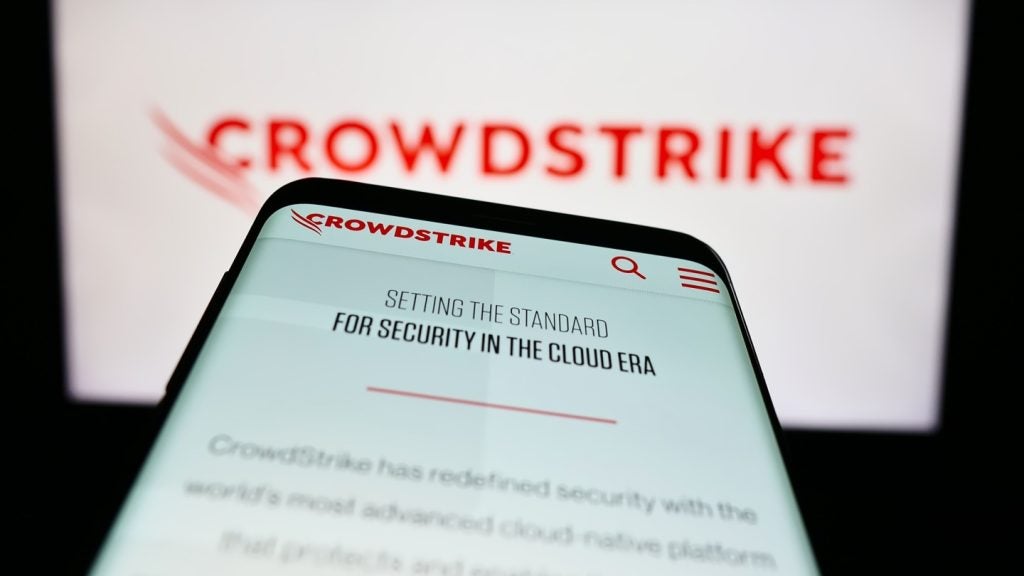
Live shopping is a multi-billion business in China, but has so far failed to catch on in North America and Europe. That may seem odd. The ingredients to successfully launch this mix of live-streamed entertainment and online shopping are as present here as in Asia.
There is certainly no shortage of social media platforms. US-based Facebook, Instagram Live, YouTube and Twitch are used by billions of people every day. Moreover, they provide live shopping features and opportunities akin to those in Asia.
These platforms have also nurtured a flourishing influencer culture. Log onto the platform of your choice and you can expect to be bombarded by high-octane personalities trying to flog everything from energy drinks to athleisure brands.
Despite the ubiquity of platforms, solutions and influencers, the high levels of instant gratification provided with live mobile shopping in China has so far failed to materialise in the west. The attempts to copy the Chinese live shopping success have had mixed results so far. Even Asian platform TikTok seems to struggle to copy its Chinese success.
Livestream shopping experiences are expected to rake in $480bn in China this year, according to eMarketer. Conversely, their Stateside counterparts are only projected to top up their coffers with $11bn in 2022, according to Foresight Research.
So why hasn’t live shopping caught on?
How well do you really know your competitors?
Access the most comprehensive Company Profiles on the market, powered by GlobalData. Save hours of research. Gain competitive edge.

Thank you!
Your download email will arrive shortly
Not ready to buy yet? Download a free sample
We are confident about the unique quality of our Company Profiles. However, we want you to make the most beneficial decision for your business, so we offer a free sample that you can download by submitting the below form
By GlobalDataTo explain that, let’s first take a closer look at what live shopping is.
What exactly is live shopping?
The phrase live shopping has been around for decades in the UK. For some, the term evokes memories of enthusiastic hosts on late-night TV channels attempting to sell two-headed “wonder” mops, electronic exercise equipment engineered to electrocute you into shape and “super-sharp” knives.
Live commerce allows consumers to instantly purchase products while participating with sellers on screen. That hasn’t changed.
However, the size of the market has exploded over the past decade – live shopping is actually bigger today than it ever has been before.
The live shopping market has blown up thanks to the internet. Shoppers no longer use TV sets to get their commercial fixes, but a range of tablets, phablets, smartphones and desktops – all connected to the web.
Today, live shopping, or live commerce, refers to the act of merging online shopping and entertainment – it is all about social media.
The popularity of live shopping has risen in tandem with the dramatic growth of platforms like TikTok and Instagram.
While western economies are home to some of the most popular platforms in the world, live shopping has so far had its biggest successes in Asia. The live shopping industry makes up over 10% of the entire Chinese commerce market.
Live shopping instantly worked in China
The origins of the Chinese live shopping explosion can be traced back to 2016. That was when Alibaba, a giant Chinese company similar to Amazon, opened “a new chapter in sales,” as consultancy firm McKinsey later put it.
Alibaba teamed up with its online shopping subsidiary Taobao to link an online live stream broadcast with an ecommerce store. The ability to watch and shop at once skyrocketed sales, leading to live commerce becoming a key part of China’s ecommerce market.
The concept proved a roaring success and live shopping quickly established itself a fixture in the Chinese retail calendar. People tuned in in droves to enjoy live shopping during Alibaba’s Singles’ Day, an unofficial holiday and shopping day akin to Black Friday or Amazon Prime Day.
Apps like Taobao and ByteDance’s Douyin, the Chinese equivalent of TikTok, have since revolutionised how people shop.
China’s online shopping channels feature high production sets, bombastic sound effects, frantic countdowns and last-minute flash sales – all hosted by charismatic presenters creating urgency in those watching to click the button and buy a product.
It’s a concept tailored to modern netizens devoted the cult of personalities surrounding movie gods, rock stars and social media personalities.
Unsurprisingly, people like Kim Kardashian have already tapped into the exploding market. The American socialite leveraged the booming Chinese live market in 2019 and appeared on Tmall Global, another Alibaba-owned platform, LA Times reported.
By doing so, the reality star sold out 150,000 bottles of her $47 KKW fragrances in a matter of seconds, Alibaba reported.
But that was only the beginning. The next years’ global crisis would take things up a notch.
Covid-19 was a gift from above for live shopping
Live shopping exploded during the pandemic. During the Covid-19 crisis, Beijing introduced strict social restrictions in order to prevent the spread of the contagion. As a result, people turned to online shopping. A similar trend was also seen in the west.
The success from the concept has only grew. In the first 30 minutes of Alibaba’s Singles’ Day 2020 Taobao Live totalled a record $7.5bn in transactions.
There are many reasons why live shopping took off in China. One factor put forward by Michael Liu, head of innovation at Carat USA, to Campaign is that the purchasing culture in Asia made it easier for live shopping to kick off.
“The people there have a habit of ordering things online and getting them delivered in just a few minutes, or later in the day,” Liu said.
“We just haven’t seen that in the US at a massive scale”.
The western live shopping exeperience seems to be faltering
The huge success of live shopping in China has spurred on platforms and brands in the west to try and get a piece of the interactive pie.
TikTok, Instagram, Pinterest, Amazon’s and YouTube have all taken a punt at launching live stream shopping features and events in Europe and in North America.
“It presents an opportunity to have that slicker, all in one experience,” Daniel Greiller, chief commercial officer at Weavr, a platform that allows businesses to embed plug-and-play financial services, tells Verdict.
“The rise of platforms like Instagram and TikTok have pushed ecommerce a long away beyond just marketing inventory, doing an online checkout and having a delivery.
“I think part of the reason for that is that it’s scratching an itch that hasn’t been scratched elsewhere.”
Even though there’s clearly an itch that needs scratchings, western attempts to emulate the success enjoyed by their Chinese peers have so far had mixed results.
Facebook recently announced it would suspend its Live Shopping feature. It previously hosted ‘Live Shopping Fridays’ which mirrored Chinese shopping events, featuring creators showing off items in “how-to” style videos and providing detailed insight into products.
Facebook is not the only social media company to pack in their attempt either. TikTok also suspended the expansion of its Live Shop solution in Europe and US due to low consumer engagement, the Financial Times reported.
Meta has not confirmed the reasoning for giving up its Live Shopping feature, but it is expectedfor giving up its Live Shopping feature, but it is expected to be similar to that of TikTok.
” target=”_blank” rel=”noreferrer noopener”> to be similar to that of TikTok.“For social commerce to be successful, these platforms will have to find a way to convince consumers that purchasing products on Facebook or TikTok is as simple and safe as purchasing via Amazon,” Chris Dinga, payments analyst at GlobalData, tells Verdict.
Away from social media, Amazon US was one of the first western shopping platforms to launch its own version of live shopping back in 2019. The company still has dedicated a portion of its website dedicated to ‘Amazon Live‘.
It features a series of shopping channels laid out and hosted in the same way as China. Amazon customers can browse ‘featured creators’, a mix of Amazon talent and individual brands, who host their own shows and sell products.
Amazon Live was put into focus in 2020 when the company invited a series of high-profile influencers onto the channels to discuss deals for Amazon Prime Day.
Despite running for a few years now, it doesn’t seem like the live shopping section has made a big splash with consumers. A quick browse through its active channels shows most of the viewer counts sitting at around 30 per stream.
Is live shopping in the US and the UK about to change?
Big Tech titans have attempted to recapture some of the momentum Asian counterparts have enjoyed when it comes to live shopping. However, those projects have so far failed to reach the same levels of success.
Despite this apparent lack of success, shakers and movers in this field are excited about the opportunities in this field and research seems to back them up.
A June 2021 study by creator marketing platform LTK stated that 92% of all Gen Z adults aged between 18 and 25-years old have bought an item at the recommendation of social media influencers.
“Livestream shopping will play a vital role in the coming years, not just for brands, but for retailers and marketplaces too,” Glen Dormieux, CEO of UK adtech firm Playrcart, tells Verdict.
“With McKinsey forecasting 10-20% of all ecommerce by 2026 will come from live commerce initiated sales, the rapidly growing channel provides several opportunities to drive value.”
In fact, a wave of entrepreneurs is now working towards making these statistics a reality.
Conferwith is a UK startup looking to help businesses easily adapt to the whirlwind possibilities of ecommerce live shopping.
The startup allows online businesses to seamlessly integrate a 1-2-1 live shopping system into their checkout process – connecting customers to in-store experts via video call
Boris Lokschin, co-founder and CEO of digital commerce expert Spryker, believes websites like Conferwith are what will push live shopping forward in the UK.
“The rise of live shopping is yet another sign that digital commerce is evolving faster than ever,” Lokschin tells Verdict.
“As shoppers continue to expect more innovative, engaging, and seamless experiences, digital commerce businesses must adapt to their changing needs, adopt new modes of commerce, and reinvent past shopping trends.
“Businesses should also remember that once a trend hits consumers, it’s not long until it enters the B2B world, too.”
Still a long way to go
Despite advancements by a number of western platforms, it seems as if live shopping has a long way to go before reaching the ecommerce heights of China.
“Even in these early stages, there are already key differences between the UK’s live shopping market and that of other markets,” Jake Ward, business development director at live-streaming agency Groovy Gecko, tells Verdict.
He suggests that the Chinese model, where influencers sell directly to their audience, may not be appropriate for UK-based brands. Not only may it not be a good fit, but it is also “largely dependent on the influencers used and the size of their following.”
On the other hand, some market watchers believe that it’s just a matter of time before the west’s live shopping experiments catch up with those in Asia.
“It is further behind in the UK but it’s obviously going to grow in my view because it taps into that instant gratification,” Greiller said, “It presents an opportunity to have that slicker, all in one experience.”
In his mind, the “fantastic personalised experience” promised by leveraging data and artificial intelligence has failed to materialise. However, that doesn’t mean that people don’t want a bespoke experience.
“[When] you think about the digitalisation of commerce it’s actually a very obvious and natural evolution,” Greiller says.
The west is still a long way away from even getting close to replicating China’s success in live shopping. With news that Facebook and TikTok have suspended their live-commerce platforms, it may be even longer before we see a real live shopping boom over here.
However, it is clear that live shopping allows brands to deepen customer relationships, increase engagement and break the barrier between consumer and seller.
That’s something no company will want to miss out on. The FOMO is real.
GlobalData is the parent company of Verdict and its sister publications.







